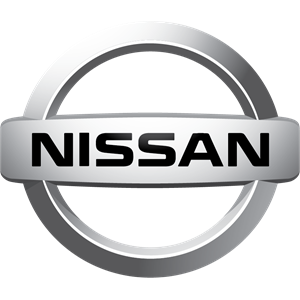 Nissan Versa Sedan Service ManualEngine » Engine control system (EC) » Diagnosis and repair workflow
Nissan Versa Sedan Service ManualEngine » Engine control system (EC) » Diagnosis and repair workflow
Work Flow
Work Flow
OVERALL SEQUENCE

*1: Include 1st trip DTC. *2: Include 1st trip freeze frame data.
DETAILED FLOW
1.GET INFORMATION FOR SYMPTOM
- Get the detailed information from the customer about the symptom (the condition and the environment when the incident/malfunction occurred) using the "Diagnostic Work Sheet".
- Ask if the customer requests I/M examination.
Malfunction information, obtained>>GO TO 2.
No malfunction information, but a request for I/M examination>>GO TO 13.
2.CHECK DTC
- Check DTC of ″All DTC Reading″.
- Perform the following procedure if DTC is displayed.
- Record DTC and freeze frame data. (Print them out with CONSULT or GST.)
- Erase only DTC of ″ENGINE″.
 With CONSULT: "How to Erase DTC
and 1st Trip DTC" in EC, "CONSULT Function".
With CONSULT: "How to Erase DTC
and 1st Trip DTC" in EC, "CONSULT Function". Without CONSULT: "How to Erase
Selfdiagnostic Results" in EC, "On Board Diagnosis Function".
Without CONSULT: "How to Erase
Selfdiagnostic Results" in EC, "On Board Diagnosis Function". - Study the relationship between the cause detected by DTC and the symptom
described by the customer.
(Symptom Table is useful. Refer to EC, "Symptom Table".)
3. Check related service bulletins for information.
Is any symptom described and is any DTC detected?
Symptom is described, DTC is detected>>GO TO 3.
Symptom is described, DTC is not detected>>GO TO 4.
Symptom is not described, DTC is detected>>GO TO 5.
3.CONFIRM THE SYMPTOM
Try to confirm the symptom described by the customer (except MIL ON).
Also study the normal operation and fail safe related to the symptom.
Diagnostic Work Sheet is useful to verify the incident.
Verify relation between the symptom and the condition when the symptom is detected.
>> GO TO 5.
4.CONFIRM THE SYMPTOM
Try to confirm the symptom described by the customer.
Also study the normal operation and fail safe related to the symptom.
Diagnostic Work Sheet is useful to verify the incident.
Verify relation between the symptom and the condition when the symptom is detected.
>> GO TO 6.
5.PERFORM DTC CONFIRMATION PROCEDURE
Perform DTC CONFIRMATION PROCEDURE for the displayed DTC, and then make sure that DTC is detected again.
If two or more DTCs are detected, refer to EC, "DTC Inspection Priority Chart" and determine trouble diagnosis order.
NOTE:
- Freeze frame data is useful if the DTC is not detected.
- Perform Component Function Check if DTC CONFIRMATION PROCEDURE is not
included on Service
Manual. This simplified check procedure is an effective alternative though
DTC cannot be detected during
this check.
If the result of Component Function Check is NG, it is the same as the detection of DTC by DTC CONFIRMATION PROCEDURE.
Is DTC detected?
YES >> GO TO 10.
NO >> Check according to GI, "Intermittent Incident".
6.PERFORM BASIC INSPECTION
Perform EC, "Work Procedure".
Do you have CONSULT?
YES >> GO TO 7.
NO >> GO TO 9.
7.PERFORM "SPEC" IN DATA MONITOR MODE
 With CONSULT
With CONSULT
Make sure that "MAS A/F SEB1", "B/FUEL SCHDL" and "A/F ALPHAB1" are within the SP value in "SPEC" of "DATA MONITOR" mode with CONSULT.
Is the measurement value within the SP value?
YES >> GO TO 9.
NO >> GO TO 8.
8.DETECT MALFUNCTIONING PART BY TROUBLE DIAGNOSIS SPECIFICATION VALUE
Detect malfunctioning part according to EC, "Diagnosis Procedure".
Is malfunctioning part detected?
YES >> GO TO 11.
NO >> GO TO 9.
9.DETECT MALFUNCTIONING SYSTEM BY SYMPTOM TABLE
Detect malfunctioning system according to EC, "Symptom Table" based on the confirmed symptom in step 4, and determine the trouble diagnosis order based on possible causes and symptom.
>> GO TO 10.
10.DETECT MALFUNCTIONING PART BY DIAGNOSIS PROCEDURE
Inspect according to Diagnosis Procedure of the system.
NOTE: The Diagnosis Procedure in EC section described based on open circuit inspection. A short circuit inspection is also required for the circuit check in the Diagnosis Procedure.
Is malfunctioning part detected?
YES >> GO TO 11.
NO >> Monitor input data from related sensors or check the voltage of related ECM terminals using CONSULT.
11.REPAIR OR REPLACE THE MALFUNCTIONING PART
- Repair or replace the malfunctioning part.
- Reconnect parts or connectors disconnected during Diagnosis Procedure again after repair and replacement.
- Check DTC. If DTC is displayed, erase it.
 With CONSULT: "How to Erase DTC
and 1st Trip DTC" in EC, "CONSULT Function".
With CONSULT: "How to Erase DTC
and 1st Trip DTC" in EC, "CONSULT Function". Without CONSULT: "How to Erase
Selfdiagnostic Results" in EC, "On Board Diagnosis Function".
Without CONSULT: "How to Erase
Selfdiagnostic Results" in EC, "On Board Diagnosis Function".
>> GO TO 12.
12.FINAL CHECK
When DTC was detected in step 2, perform DTC CONFIRMATION PROCEDURE or Component Function Check again, and then make sure that the malfunction have been repaired securely.
When symptom was described from the customer, refer to confirmed symptom in step 3 or 4, and make sure that the symptom is not detected.
Is DTC detected and does symptom remain?
YES1 >> DTC is detected: GO TO 10.
YES2 >> Symptom remains: GO TO 6.
NO1 >> No request for I/M examination from the customer: Before returning
the vehicle to the customer,
always erase unnecessary DTC in ECM and TCM (
 With CONSULT: Refer to "How to
Erase
DTC and 1st Trip DTC" in EC, "CONSULT Function",
With CONSULT: Refer to "How to
Erase
DTC and 1st Trip DTC" in EC, "CONSULT Function",
 Without CONSULT: Refer to "How to
Erase Selfdiagnostic Results" in EC, "On Board Diagnosis Function").
Without CONSULT: Refer to "How to
Erase Selfdiagnostic Results" in EC, "On Board Diagnosis Function").
NO2 >> I/M examination, requested from the customer: GO TO 13.
13.PREPARE FOR I/M EXAMINATION
- Set SRT codes. Refer to EC135, "Description".
- Erase permanent DTCs. Refer to EC141, "Description".
>> INSPECTION END
